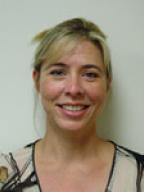
Biography
Education
- PhD, 2003, University of California, Los Angeles. Dissertation: "The Spatial Distribution of Invasive Plants at a Local and Regional Scale in California."
- MS, 1996, Humboldt State University. Thesis: "The Landscape-scale Analysis of Mammalian Carnivore Distribution and Habitat Use by Fisher."
- BA, 1990, University of California, Davis
Courses Taught
- World Vegetation and Soils
- Introduction to Geographic Information Systems
- Physical Geography
Selected Publications and Presentations
Dark, S.J. Using remote sensing to identify non-native plant species in Coastal Sage Scrub of California. International Journal of Remote Sensing. In Preparation.
Gillespie T., C. Pattengill-Semmens, B. Semmens, P.C. Fung, and S.J. Dark. 2003. Macroecology and conservation of fish on coral reefs in the Florida Keys. Coral Reefs. In Review.
S.J. Dark, 2003. The distribution of invasive plants in California: An application of spatial regression models. Diversity and Distributions.
S.J. Dark, R. Guitierrez, and G. Gould. 1998. The invasion of Barred Owls (Strix varia) in California: Potential impacts on the Spotted Owl (Strix occidentalis). The Auk 115 (1): 50-56.
S.J. Dark. 2003. The distribution of invasive plants in California: An application of GIS and spatial regression analysis. American Association of Geographers 2003 Annual Conference, New Orleans, LA.
Research and Interests
My current research focuses on biological invasion. More specifically, I have focused my research on identifying the distribution of invasive plant species in California at both a regional and local scale. My primary goal is to identify the current distribution of invasive plants and to predict their potential impact on native plant communities. My techniques have focused on the use of field data, GIS, remotely sensed imagery, and spatial statistics for modeling species distribution. I am also interested in the impacts of non-native animals and the spread of diseases. In addition to biological invasion, I also have an interest in topics related to conservation biology, environmental studies, and spatial analysis. I am particularly interested in looking at issues related to the use of GIS/Remote Sensing and spatial analysis with a focus on the Modifiable Areal Unit Problem (the MAUP) and it's impact on biogeographical analysis.
